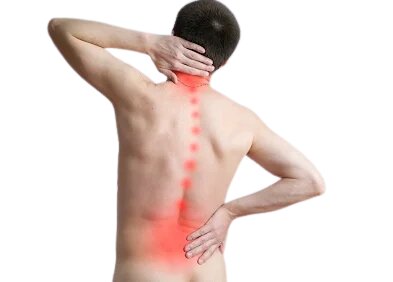scoliosis
Introduction
 The surgical indication is based on the estimation of the prognosis in adulthood, depending on the angle of the scoliosis, its topography, the alteration of profile balance, and possible respiratory repercussions already present. Even if the discomfort is not significant in adolescence, surgery can still be proposed at this stage, if the surgeon is certain that the untreated natural evolution will be unfavorable in adulthood.
The surgical indication is based on the estimation of the prognosis in adulthood, depending on the angle of the scoliosis, its topography, the alteration of profile balance, and possible respiratory repercussions already present. Even if the discomfort is not significant in adolescence, surgery can still be proposed at this stage, if the surgeon is certain that the untreated natural evolution will be unfavorable in adulthood.
Surgery for scoliosis in adulthood concerns so-called aged scoliosis and so-called de novo or osteoarthritic scoliosis whose main site is lumbar.
Surgical Technique
The intervention consists of placing a metal instrumentation, comprising a rod, screws in contact with the spine in order to correct the deformation in the three planes of space, while restoring the balance. Often the recovery obtained is only partial, given the significant stiffness of certain portions of the curves. Nevertheless, even a partial correction and especially the avoidance of any future evolutionary resumption are sufficient to improve the functional future, in comparison with an untreated evolution.
The instrumentation is always completed by a graft between the vertebrae. This graft contributes to suppress any movement between the instrumented vertebrae. This rigidity can be considered a disadvantage of the procedure, but it should be noted that scoliosis itself already causes a significant decrease in mobility, which is why this disadvantage is considered acceptable, especially since the surgeon avoids, in as far as possible, to block all the mobile stages in the lumbar sector. The metal hardware remains permanently in place, unless complications arise.
The procedure takes place in the operating room, under general anesthesia.
The patient is placed on his stomach, on a special support. A urinary catheter is placed, as well as multiple venous and arterial catheters. The affected vertebrae are exposed and the metal hardware is put in place. Curvatures are corrected by gradually straightening the rods moored to the column. X-ray checks verify the correct position of the implants. This graft takes about six months to be completely solid, at which time the stems are relieved of their constraints, which reduces the risk of material breakage. The closure is performed, possibly after placing drains to prevent the formation of hematomas.
In the case of lumbar scoliosis, it is usual to perform a secondary anterior graft during a second surgery. By inserting the graft into the lumbar disc spaces the surgeon increases the chances of welding the arthrodesis.
The duration of the intervention, installation included, is several hours, 4 to 6 on average. Recovery and initial postoperative monitoring usually take place in the intensive care or continuing care unit.
Operative follow-up
Pains: they are quite significant during the first 2 or 3 days, which is why morphine treatments are necessary.
There is no need for additional immobilization by cast or corset.
If drains have been placed, they are usually removed on the 2nd or 3rd postoperative day.
Rising usually occurs on the first day.
The duration of hospitalization varies between 5 and 10 days, depending on the general evolution and the ability to perform everyday activities. Biological checks are carried out regularly so as not to overlook a possible infectious complication.
Results
This intervention, in a specialized center, ensures good results on a regular basis on compression pain neurological and on the correction of the deformity. Complications are rare but can be serious and even life-threatening.